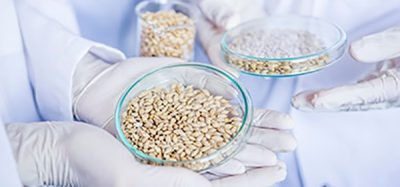Toxins: Old and new challenges in seafood safety
- Like
- Digg
- Del
- Tumblr
- VKontakte
- Buffer
- Love This
- Odnoklassniki
- Meneame
- Blogger
- Amazon
- Yahoo Mail
- Gmail
- AOL
- Newsvine
- HackerNews
- Evernote
- MySpace
- Mail.ru
- Viadeo
- Line
- Comments
- Yummly
- SMS
- Viber
- Telegram
- Subscribe
- Skype
- Facebook Messenger
- Kakao
- LiveJournal
- Yammer
- Edgar
- Fintel
- Mix
- Instapaper
- Copy Link
Posted: 23 June 2014 | Gian Paolo Rossini, Università di Modena e Reggio Emilia | No comments yet
Fishery and aquaculture have been increasing in already exploited parts of the sea, as well as new areas, following the strong demand of food on global and regional scales. The possible contamination of fishery products due to toxins of microalgal origin is a matter of concern for fishery and aquaculture worldwide, and food safety has been a major drive for the development and implementation of procedures to protect consumers. The advancements of knowledge on toxic microalgae and microalgal toxins have played a fundamental role for developments in the last 10 years. Increasing awareness regarding the complexity of issues to be approached in this field has been providing better theoretical and operational tools for future progress in the risk assessment and management of both ‘old’ and ‘novel’ toxins; helping the fishery and aquaculture sectors to meet consumers’ expectations for safe food.


The increasing demand of food on global and regional scales is keeping the attention of stakeholders on already exploited parts of the sea, as well as new areas, including freshwater. The increasing fishery and aquaculture exploitation has emphasised the many issues linked to human and environmental health, and particularly food safety. The possible contamination of fishery products due to toxins of microalgal origin is one such issue, and has been a major drive for the development and implementation of effective procedures to manage the risks posed by the natural products responsible for human and animal intoxications.
The existence of toxic microalgae has been recognised for centuries, and the contamination of fishery products, particularly bivalve molluscs, represents a natural phenomenon2. It’s no surprise, therefore, that scientific and technological advancements have marked the efforts to obtain the best possible knowledge and tools for human health protection with regard to fishery products, particularly in the last 20 years. Undoubtedly, the Codex Alimentarius has been playing a key role in the identification of actions framing the management of risks posed by toxic microalgae and the contamination of fishery products3. The process has included several steps spanning about 10 years and, importantly, has represented the outcome of concerted actions of stakeholders in the field, in a collaborative international effort of scientists, industry and political/societal bodies3. A set of recommendations drafted in Oslo in 2004 provided a fundamental contribution to this process, and called the attention onto major aspects of risk assessment and management, from a perspective of prevention that consumers might be exposed to hazardous levels of toxins in contaminated seafood3,4. The quest for: i) more toxicological data and the characterisation of the mechanism of action of different groups of toxins; ii) fully validated methods for toxin detection in contaminated food; and iii) the implementation of programmes for integrated monitoring of microalgae in waters and toxins in food clearly emerged from those recommendations. Furthermore, the need of operational models for forecasting blooms of toxic microalgae was stressed4.
Ten years after the consultation in Oslo, I wish to propose a few considerations, to contribute to support further action for the protection of human and environmental health, as well as the support of activities of fishery and aquaculture sectors.
The first consideration regards the body of knowledge available to stakeholders, which supported the risk analysis culminated in the Oslo consultation. The recommendations mentioned above stemmed from significant sets of data supporting risk assessment, leading to proposals for risk management4. In keeping with past efforts, the last 10 years have seen the development and validation of powerful instrumental methods for toxin detection in naturally contaminated samples, including the case of multi toxin analysis, as well as the production of standards and reference materials needed to perform analyses5. The regulatory acceptance of LC-MS/MS procedures and the replacement of mouse bioassay for the detection of toxin contaminations in shellfish and other seafood6, in particular, has been a major achievement of the last years5,7. On a toxicological ground, more data on environmental and human effects of toxins have been gathered, supporting knowledge-based decisions for risk management8,9. Furthermore, advanced bio-molecular tools have been employed to probe mechanisms of action of toxins, providing relevant information for the understanding of the molecular bases of toxicity of both seafood and freshwater toxins, including ‘old’ and ‘novel’ natural products10-12. The advancements have not been confined to toxins detection and their biological activity, but have included microalgal biology, providing better knowledge regarding the pathways of toxin biosynthesis13,14, as well as the detection of toxic microalgae by DNA probes2,15.
Even an outline of the progresses in the field of toxic microalgae and microalgal toxins is obviously beyond the scope of this short contribution. Thus, the quick mentioning of important topics which have received attention, and led to significant advancements, is instrumental to highlighting a couple of points.
The first point can be better approached by inspection of Figure 1, where a simplified scheme of major lines of investigation in the broad field of toxic microalgae and microalgal toxins is proposed, showing links existing as to the understanding of basic scientific issues, their further study aimed at developing tools for risk management, and the primary outcome of these activities. The great complexity of issues at stake emerges from the extreme simplification of this scheme, including the three primary levels of analysis: the algal producers of toxins, the organisms that may become contaminated by feeding on toxic microalgae, and the animals that may become intoxicated as a consequence of exposure to toxins upon ingestion of contaminated seafood. The three levels of analysis are not isolated, and significant interactions, either actual or operational, exist. Furthermore, multiple topics contribute to the characterisation of processes at each level of analysis, and the few items indicated in the scheme simply pinpoint the many factors to be considered at sub-system levels. Indeed, the knowledge gained through activities at any single level is not ‘all-inclusive’, and different steps can be proposed in the linear development from basic knowledge to its exploitation as a technological/operational tool for each item in the scheme. Likewise, the elements at the three levels are not isolated from the environment and independent of each other. Thus, every biological entity of the system is affected by external conditions and is subjected to interactions with other individuals of the same species and other species as well.
Considering this schematic representation of complex systems, the importance of integration among players with different expertise and fields of action becomes apparent. Indeed, the extensive interactions of the fishery and shellfish industry and academia have been giving very strong support to basic biological and chemical research, as well as the development of effective analytical tools4,5.
The concerted actions and interdisciplinary research activities is the proper background of future developments in the area, which represents the second point I wish to consider. The great progress of our knowledge in the field in the last 10 years, in fact, has brought a better recognition of gaps and lacks, posing novel emphasis on the importance of a continuing support to research activities aimed at further advancements in the characterisation of toxic microalgae and microalgal toxins, to support human and environmental health as well as the fishery and aquaculture industry. Based on the scheme of Figure 1, a good guess is that many issues remain open and additional questions have been raised by the results obtained so far. This is actually correct, and I will just mention a few lines of major intervention already gathering the attention and action of stakeholders.
In the field of algal biology, the characterisation of the huge dinoflagellate genomes represents a major challenge which will demand tremendous research efforts of the scientific community. The full clarifications of biosynthetic pathways of toxins in microalgae, and the understanding of major factors regulating the production of these agents, represent other relevant topics, whose developments will need better understanding of the physiology of toxic microalgae in the wild. A more in depth knowledge on toxin metabolism in contaminated species, and the possible effects those stressors may have on host/vector physiology will be additional lines of intervention. Significant advancements in these two areas will have a positive impact on the development of tools for the protection of human and environmental health, as well as fishery and aquaculture activities.
It seems likely that a full clarification of biosynthetic pathways of toxins in microalgae will be mirrored by developments in the chemical characterisation of toxins and better performing instrumental tools for toxin detection in biological matrices. Particular attention in the analytical field is being already given to the development of bio-molecular procedures for toxin detection, primarily antibody- and receptor-based methods. In the future, increasing efforts in this area will be devoted to find the best analytical settings for accurate quantification of toxicologically relevant components in rapid, high-throughput, user-friendly and cost-effective formats.
Research activities aimed at the development of toxicity-oriented tools for toxin detection will also involve cell-based methods16, in keeping with the clarification of toxicity pathways and an increased use of cellular systems in toxicity testing17. Significant advancements in this area will be possible only if appropriate characterisation of mechanisms and modes of action of toxins will be obtained. This kind of progress should eventually support the development of simplified bio-molecular procedures for sample analysis under cell-free conditions, as exemplified by the receptor binding assay for saxitoxin-group toxins18.
With regard to toxicity studies, at both a molecular and organismal level, the importance of gathering knowledge of responses ensuing from the combined actions of different classes of toxins in mixtures will most likely mark future investigations. Considering seafood safety, it has to be expected that consumers are being exposed to mixtures of stressors, rather than to a single agent at a time, and microalgal toxins might actually represent only a portion of the burden of toxicants ingested with seafood. Thus, the protection of human health and the marketing of safe seafood will certainly demand a better understanding of the toxicity of mixtures. The extreme complexity inherent into this issue, due to the variety of combinations of agents and their relative concentrations, represents a major challenge for toxicologists.
Obtaining ‘operational models for forecasting blooms of toxin-producing microalgae in time and space’, as recommended by the Oslo report4, will perhaps represent one of the most challenging topics in the field, and will keep stakeholders busy for quite some time. The modelling of harmful algal blooms has been already approached in the last years by distinct theoretical and operational approaches19, and most effective advancements are expected in the next 10-15 years. Progress in this area will be accompanied by development of remote sensing devices, such as the Environmental Sample Processor20, and it is expected that data collection by robotised equipment will exploit the most advanced knowledge and analytical tools obtained for the detection and quantification of relevant microalgae and toxins in open sea.
The protection of consumers from intoxications due to seafood contaminated with microalgal toxins, as well as the activities in fishery and aquaculture sector have been supported by the advancements of knowledge on toxic microalgae and microalgal toxins in the last 10 years. The awareness of the complexity of issues to be approached in this field has increased in the scientific community and other stakeholders, giving better theoretical and operational tools for further progress in the risk assessment and management of both ‘old’ and ‘novel’ toxins. These are good news for future actions for seafood safety.
References
- The State of World Fisheries and Aquaculture 2012. FAO, Rome, Italy, 2012. http://www.fao.org/docrep/016/i2727e/i2727e00.htm, last access: January 15, 2014.
- Anderson, D. M.; Cembella, A. D.; Hallegraeff, G. M. Progress in understanding harmful alfgal blooms: Paradigm shifs and new technologies for research, monitoring, and management. Annual Review of Marine Science 2012, 4, 143-176.
- Ababouch, L. International initiatives to assess and manage the risk of biotoxins in bivalve molluscs. In Toxins and Biologically Active Compounds from Microalgae. Vol. 2; Rossini, G. P., Ed. CRC Press, Boca Raton, FL, USA, 2014, pp. 616-630.
- Lawrence, J.; Loreal, H.; Toyofuku, H.; Hess, P.; Iddya, K.; Ababouch, L. Assessment and Management of Biotoxin risks in Bivalve Molluscs. FAO Fisheries and Aquaculture Technical Paper, n. 551. FAO, Rome, Italy, 2012. http://www.fao.org/docrep/015/i2356e/i2356e00.htm; last access: January 15, 2014.
- McNabb, P. Instrumental methods for determination of marine microalgal toxins. In Toxins and Biologically Active Compounds from Microalgae. 1; Rossini, G. P., Ed. CRC Press, Boca Raton, FL, USA, 2014, pp. 413-448.
- European Communities. Regulation 15/2011. Official Journal of the European Communities 2011, L6, 3-6.
- Gago-Martínez, A.; Braña-Magdalena, Challenging times for the detection of marine biotoxins in the EU. In Toxins and Biologically Active Compounds from Microalgae. Vol. 2; Rossini, G. P., Ed. CRC Press, Boca Raton, FL, USA, 2014, pp. 566-584.
- Landsberg, J. H.; Lefebvre, K. A.; Flewelling, L. J. Effects of toxic microalgae on marine organisms. In Toxins and Biologically Active Compounds from Microalgae. Vol. 2; Rossini, G. P., Ed. CRC Press, Boca Raton, FL, USA, 2014, pp. 379-449.
- Hoagland, P. Coupled nature-human (CNH) systems: Generic aspects of human interactions with blooms of Florida red tide (Karenia brevis) and implications for policy responses. In Toxins and Biologically Active Compounds from Microalgae. Vol. 2; Rossini, G. P., Ed. CRC Press, Boca Raton, FL, USA, 2014, pp. 502-537.
- Chen, T.; Wang, Q.; Cui, J.; Yang, W.; Shi, Q.; Hua, Z.; Ji, J.; Shen, P. Induction of apoptosis in mouse liver by microcystin-LR, Molecular and Cellular Proteomics 2005, 4, 958-974.
- Kharrat, R.; Servent, D.; Girard, E.; Ouanounou, G.; Amar, M.; Marrouchi, R.; Benoit, E.; Molgó, J. The marine phycotoxin gymnodimine targets muscular and neuronal nicotinic acetylcholine receptor subtypes with high affinity. Journal of Neurochemistry 2008, 107, 952-963
- Sala, G. L.; Bellocci, M.; Callegari, F.; Rossini, G. P. Azaspiracid-1 inhibits the maturation of cathepsin D in mammalian cells. Chemical Research in Toxicology 2013, 26, 444-455.
- Mihali, T. K.; Kellmann, R.; Neilan, B. A. Characterisation of the paralytic shellfish toxin biosynthesis gene clusters in Anabaena circinalis AWQC131C and Aphanizomenon NH-5. BMC Biochemistry 2009, 10: 8
- Hotta, K.; Watanabe, K. Current understanding and hypotheses on the biosynthesis of microalgal polyether toxins. In Toxins and Biologically Active Compounds from Microalgae. 1; Rossini, G. P., Ed. CRC Press, Boca Raton, FL, USA, 2014, pp. 281-347.
- Penna, A.; Galluzzi, L. Detection and quantification of toxic microalgae by the use of innovative molecular methods. In Toxins and Biologically Active Compounds from Microalgae. 1; Rossini, G. P., Ed. CRC Press, Boca Raton, FL, USA, 2014, pp. 51-74.
- Rossini, G. P.; Hartung, T. Food for thought…Towards tailored assays for cell-based approaches to toxicity testing. ALTEX 2012, 29, 359-372.
- National Research Council. Toxicity Testing for the 21st Century: A Vision and a Strategy. National Academies Press, Washington D.C., USA, 2007.
- Van Dolah, F. M.; Leighfield, T. A.; Doucette, G. J. Single-laboratory validation of the microplate receptor binding assay for paralytic shellfish toxins in shellfish. Journal AOAC International 2009, 92, 1705-1713.
- Franks, P. J. S. Modeling of harmful algal blooms: Advances in the last decade. In Toxins and Biologically Active Compounds from Microalgae. Vol. 2; Rossini, G. P., Ed. CRC Press, Boca Raton, FL, USA, 2014, pp. 538-565.
- Scholin, C.; Doucette, G.; Jensen, S.; Roman, B.; Pargett, D.; Marin, R. III; Preston, C.; Jones, W.; Feldman, J.; Everlove, C.; Harris, A.; Alvarado, N.; Massion, E.; Birch, J.; Greenfield, D.; Vrijenhoek, R.; Mikulski, C.; Jones, K. Remote detection of marine microbes, small invertebrates, harmful algae, and biotoxins using the Environmental Sample Processor (ESP). Oceanography 2009, 22, 158–167.
About the author
Gian Paolo Rossini is full professor of Biochemistry at the Università di Modena e Reggio Emilia (Italy), where he teaches general and applied biochemistry. He obtained his degree in Biological Sciences at the Università di Bologna (Italy) in 1976. From 1979 to 1981 he was a Research Associate at The University of Chicago, USA. Gian was a Guest Scientist at the Karolinska Institutet, Sweden from January to December 1985, and at the Institut National des Sciences Appliquées de Lyon, France from September 1994 to Auguts 1995. Over the last 20 years, his investigations have been focused onto the molecular mechanisms of action and the toxicity pathways of microalgal biotoxins as well as the development of cell-based, functional methods for the detection of biotoxins in contaminated materials. He has been team leader/coordinator in several local, national and international research projects. He has contributed to the drafting of several reports for international organisms. In 2001 he was an invited expert in the ‘Working Group on Toxicology of DSP and AZP’ of the EU Commission. In 2004, Gian was invited to participate at the ‘Joint FAO/IOC/WHO ad hoc Expert Consultation on Biotoxins in Molluskan Bivalves’ held in Oslo, Norway. And from July 2006 to December 2009, he was a member of the working group on marine biotoxins of the European Food Safety Authority (Scientific Panel on Contaminants in the Food Chain).






